
Journal of Astronomical History and Heritage
Scope & Guideline
Bridging the Gap Between Past and Universe
Introduction
Aims and Scopes
- Cultural Astronomy:
The journal emphasizes the study of how different cultures have interpreted celestial phenomena and integrated them into their societal frameworks, including mythology, religion, and art. - Historical Development of Astronomy:
It covers the historical progression of astronomical knowledge, focusing on key figures, institutions, and discoveries that have shaped modern astronomy. - Interdisciplinary Approaches:
The journal encourages interdisciplinary research, blending history, philosophy, literature, and the sciences to provide a holistic understanding of astronomical heritage. - Technological and Instrumental Evolution:
Research on the development and impact of astronomical instruments, observatories, and methodologies is a key focus, highlighting how technology has influenced astronomical discoveries. - Global Perspectives:
The journal promotes a global view of astronomy's history, incorporating studies from various regions and cultures, particularly those that have been historically underrepresented.
Trending and Emerging
- Astrobiology and Extraterrestrial Life:
Research exploring the implications of astrobiology and the search for extraterrestrial life is gaining momentum, reflecting broader societal interests in the cosmos and humanity's place within it. - Cultural Impact of Astronomy:
There is an increasing focus on how astronomy influences culture, literature, and philosophy, examining the interplay between scientific inquiry and cultural expression. - Digital Humanities in Astronomy:
The integration of digital tools and methodologies in the study of astronomical history is emerging, with a rise in projects that digitize historical documents and astronomical data. - Environmental and Climate Studies:
Research connecting astronomy with environmental sciences and climate change is on the rise, particularly in understanding historical celestial events and their impacts on Earth. - Public Engagement and Citizen Science:
A growing interest in the role of public engagement in astronomy, including citizen science initiatives and the democratization of astronomical knowledge, is becoming more prominent.
Declining or Waning
- Astrological Practices:
Research on historical astrological practices has seen a decline, possibly due to a shift towards more empirical and scientific approaches in the study of astronomy. - Geocentric Models:
There is a noticeable decrease in papers addressing the historical geocentric models of the universe, as the journal's focus has shifted more towards heliocentric and modern cosmological frameworks. - Colonial Astronomy:
Studies specifically centered on colonial astronomy, while still relevant, are appearing less frequently, perhaps as the journal broadens its scope to include a wider array of cultural perspectives. - Static Historical Narratives:
There seems to be a waning interest in purely chronological narratives of astronomical history, with a growing preference for thematic and interdisciplinary explorations that connect astronomy with other fields. - Local and National Histories:
The focus on localized or national histories of astronomy is decreasing as the journal increasingly emphasizes global and transnational perspectives.
Similar Journals
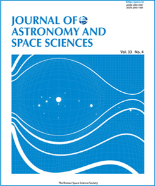
Journal of Astronomy and Space Sciences
Where Groundbreaking Research Meets Open Access.The Journal of Astronomy and Space Sciences, published by the Korean Space Science Society, is a premier open-access platform dedicated to advancing the fields of astronomy, astrophysics, and space sciences. Established in 1984, the journal has been instrumental in disseminating high-quality research findings, fostering collaboration among scientists globally, and providing insights into the dynamics of our universe. With an ISSN of 2093-5587 and an E-ISSN of 2093-1409, the journal has gained notable recognition, currently ranking in the Q3 quartile in Earth and Planetary Sciences and Physics and Astronomy as of 2023. Although the journal's H-Index is currently unspecified, its commitment to rigorous peer-review processes and open-access availability ensures that groundbreaking research is accessible to a wide audience. Based in Seoul, South Korea, the journal is poised to continue supporting innovative research through 2024 and beyond. Researchers, professionals, and students alike will find valuable resources and opportunities within its pages, further establishing this journal as a crucial resource in the exploration of the cosmos.
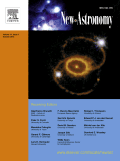
NEW ASTRONOMY
Discovering New Horizons in Celestial ResearchNEW ASTRONOMY, published by Elsevier, stands as a pivotal platform in the field of Astronomy and Astrophysics. With an ISSN of 1384-1076 and an E-ISSN of 1384-1092, this journal has solidified its reputation over its operational years, from 1996 to 2025. Located in the Netherlands, it ranks in the Q2 category for Astronomy and Astrophysics and Instrumentation, and Q3 for Space and Planetary Science, affirming its significant contribution to these disciplines. With a Scopus rank of #37/90 in Astronomy and Astrophysics and a respectable 59th percentile, this journal is essential for researchers and professionals seeking cutting-edge findings and methodologies. Although not open access, NEW ASTRONOMY remains dedicated to providing a rich repository of knowledge, featuring exceptional peer-reviewed articles that explore novel astronomical phenomena and advancements in instrumentation. Engaging with this journal will not only enhance your understanding of current trends in the cosmos but also contribute to the ongoing dialogue within these dynamic fields.
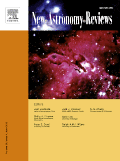
NEW ASTRONOMY REVIEWS
Unveiling the Universe: Comprehensive Reviews for the Curious MindNEW ASTRONOMY REVIEWS, published by Elsevier Science Ltd, stands as a premier journal in the field of Astronomy and Astrophysics as well as Space and Planetary Science. Established in 1998 and operating until 2024, this journal has consistently maintained a distinguished reputation, reflected in its Q1 categorization in both subject areas for 2023. It holds an impressive Scopus ranking, placed #6 out of 104 in Earth and Planetary Sciences and #7 out of 90 in Physics and Astronomy, showcasing its critical impact with a percentile rank of 94th and 92nd, respectively. Although not an open access journal, it provides vital insights and comprehensive reviews that are essential for researchers, professionals, and students eager to advance their knowledge in contemporary astronomical research and theories. With rigorous peer review and a commitment to high-quality publications, NEW ASTRONOMY REVIEWS is an indispensable resource for the scientific community striving to uncover the mysteries of the universe.

Kinematics and Physics of Celestial Bodies
Transforming Understanding of the Universe's MechanicsKinematics and Physics of Celestial Bodies is a prominent journal published by PLEIADES PUBLISHING INC, dedicated to the exploration and understanding of celestial mechanics and the physical properties of astronomical bodies. With an ISSN of 0884-5913 and an E-ISSN of 1934-8401, this journal has established itself as a resource for researchers in the fields of astronomy, astrophysics, and space science since its inception in 2009. The journal is indexed in Scopus, where it currently ranks in the fourth quartile for both Astronomy and Astrophysics and Space and Planetary Science, making it a valuable platform for scholarly discourse despite its ranking. Its scope encompasses a range of topics related to the kinematics and physical characteristics of celestial objects, aiming to facilitate a better understanding of their dynamics and interactions within the universe. Although it does not operate under an open access model, the journal provides essential insights and findings, catering to the academic needs of researchers, professionals, and students engaged in the study of the cosmos. The journal's commitment to advancing knowledge in the various aspects of celestial physics ultimately contributes to the broader scientific community's endeavors.

Journal of High Energy Astrophysics
Charting New Territories: The Science of High Energy AstrophysicsThe Journal of High Energy Astrophysics, published by Elsevier, is a premier platform for groundbreaking research in the fields of astrophysics and high-energy phenomena. With an ISSN of 2214-4048 and an E-ISSN of 2214-4056, this journal has quickly established itself as a leader since its inception in 2014. Operating out of the Netherlands, it is recognized for its rigorous peer-review process and high-quality publications, earning an impressive Q1 ranking across multiple domains, including Astronomy and Astrophysics, Nuclear and High Energy Physics, and Space and Planetary Science in 2023. With a Scopus rank of 12 out of 90 in the Astronomy and Astrophysics category, and being positioned in the 87th percentile, the journal plays a pivotal role in disseminating advancements and fostering collaboration among researchers, professionals, and students. Though the journal is not open access, it offers robust subscription options for institutions and individuals seeking to dive into the latest discoveries and theories in high-energy astrophysics.

Journal of the Korean Astronomical Society
Advancing Astronomy: Unveiling the Universe's MysteriesWelcome to the Journal of the Korean Astronomical Society, an esteemed publication dedicated to advancing the fields of Astronomy and Astrophysics as well as Space and Planetary Science. Established in 1993 and under the reputable auspices of the Korean Astronomical Society, this journal serves as a vital platform for researchers and scholars from South Korea and around the globe to disseminate innovative findings and critical insights. With a commendable Q2 ranking in Astronomy and Astrophysics and a Q3 ranking in Space and Planetary Science, this journal is positioned among the influential voices in its fields, fostering collaboration and knowledge exchange. The journal's rigorous peer-review process ensures that published works contribute significantly to ongoing discussions and developments in astronomical research. While currently not an open-access journal, it remains accessible to the academic community, encouraging readers to stay abreast of the latest advancements in the sciences that elucidate the universe's complexities. Join us in exploring the cosmos through cutting-edge research and scholarly discussion that propels the field forward.
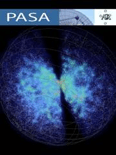
PUBLICATIONS OF THE ASTRONOMICAL SOCIETY OF AUSTRALIA
Pioneering Research in the Vastness of Space.Publications of the Astronomical Society of Australia, published by Cambridge University Press, stands as a distinguished platform for advancing knowledge in the realms of Astronomy, Astrophysics, Space, and Planetary Science. Hemmed in the United Kingdom, this journal is recognized for its outstanding contributions, reflected in its status as a Q1 journal in both Astronomy and Astrophysics, along with Space and Planetary Science categories as of 2023. With a solid impact factor, it ranks impressively at #23 within its Scopus category, firmly placing it in the competitive 75th percentile. This publication facilitates open discourse and innovative research from its inception in 1996 to the present year of 2024, providing an essential resource for researchers, professionals, and students eager to deepen their understanding of cosmic phenomena. By embracing rigorous peer-review standards and a commitment to scholarly excellence, the journal not only contributes to the scientific community but also fosters the next generation of astronomical research.
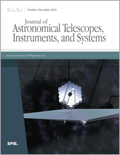
Journal of Astronomical Telescopes Instruments and Systems
Transforming Astronomical Insights with Cutting-edge InstrumentationJournal of Astronomical Telescopes Instruments and Systems is a prestigious academic journal published by SPIE-SOC PHOTO-OPTICAL INSTRUMENTATION ENGINEERS, focusing on groundbreaking research in the fields of astronomy and astrophysics, instrumentation, and optical sciences. With an ISSN of 2329-4124 and an E-ISSN of 2329-4221, this journal has steadily established its relevance in the scientific community, achieving a respectable Q2 ranking across various important categories, including Astronomy and Astrophysics and Control and Systems Engineering in the year 2023. Spanning research from its inception in 2015 to projections through 2024, the journal continues to serve as a critical platform for disseminating innovative findings that advance our understanding of astronomical instruments and systems. As researchers, professionals, and students seek to stay at the forefront of technological advancements and scientific inquiries, the Journal of Astronomical Telescopes Instruments and Systems is an invaluable resource. The journal provides a valuable venue for peer-reviewed articles that stimulate discussion and drive forward the exploration of astronomical phenomena and instrumentation techniques, making it essential reading for those invested in the future of space sciences.

ASTROPHYSICS
Exploring the Cosmos: Unraveling the Mysteries of the UniverseASTROPHYSICS, published by Springer/Plenum Publishers, stands as a crucial platform for the dissemination of groundbreaking research in the field of Astronomy and Astrophysics. Established in 1965 and continuing its legacy until 2024, the journal highlights significant advancements, theoretical frameworks, and observational data that collectively push the boundaries of our understanding of the universe. Although currently categorized in the Q4 quartile for Astronomy and Astrophysics and holding a Scopus rank within the 17th percentile, ASTROPHYSICS remains dedicated to offering rigorous peer-reviewed content that is essential for researchers, professionals, and students alike. While it does not provide open access, the journal's accessibility through institutional subscriptions ensures a wide reach among the academic community, allowing it to address the rising curiosity surrounding cosmic phenomena and contribute meaningfully to ongoing scholarly discourse. For those seeking to engage with the latest findings and methodologies in astrophysics, ASTROPHYSICS continues to serve as an indispensable resource.

Advances in Astronomy and Space Physics
Connecting Ideas, Advancing Knowledge in Space Research.Advances in Astronomy and Space Physics is an esteemed journal dedicated to the exploration and dissemination of research in the expansive fields of astronomy and space science. Published by Taras Shevchenko National University of Kyiv, this journal provides a platform for researchers, professionals, and students to share groundbreaking studies and innovations. With an ISSN of 2227-1481, it covers a wide range of subjects including astrophysics, planetary sciences, and space exploration technologies, thereby fostering interdisciplinary collaboration. Although not an Open Access journal, it maintains a commitment to high-quality, peer-reviewed content that contributes significantly to the advancement of scientific knowledge. The journal's mission is to promote sustainable practices in space research while also exploring the implications of discoveries on Earth and beyond. By maintaining rigorous publication standards, Advances in Astronomy and Space Physics aims to serve as a critical resource for those involved in the ever-evolving study of our universe.